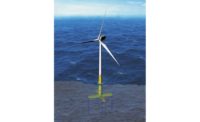Even though Japan invests a greater part of its gross domestic product in tsunami defenses than any other country in the world, Dengler says experts on that coast had not prepared for an event of that magnitude, which had a wave run-up as high as 128 ft.
The No. 1 failing in Japan was that they underestimated their hazard, says Dengler, who just returned from a 10-day examination of the tsunami wasteland. When you underestimate the hazard, everything else failsthe engineering, the education, the policies, the response ... they fell so short. It's discouraging. She says her team is reexamining everything now in light of lessons from Japan.
Yumei Wang, a geotechnical engineer focused on risk management and the geo-hazard section leader at the Oregon's Dept. of Geology and Mineral Industries, (DOGAMI ), is at the forefront of efforts to protect people in Oregon's tsunami zone. She says the Tohoku quake is a brutal reminder that we are not doing nearly enough.
Wang says the southern half of Oregon's 300-mile coastline has high ground that can provide refuge for coastal residents. However, her biggest concern is the central and north coast, a lower area with extensive flatlands. I've identified 12 communities that should be considering vertical evacuation, Wang says. They are so far from being ready.
Just as in Japan, officials here on the West Coast warn that the only reliable way to escape a tsunami is to go to high ground on foot. Cars get stuck in traffic. Roads rarely take the shortest route uphill. In the case of the Pacific Northwest, where the CSZ is so near the shore, a tsunami could be on the beach in less than 20 minutes in most places.
Inundation maps throughout the CSZ coast are progressively being refined. Most now are based on modeling of dozens of runs of both distant-source and near-source tsunamis, with partial slips or complete slips along the entire length of the CSZ. Models project across the local bathymetry and topography. Predicted heights vary by location.
Raskin says the design tsunami for Cannon Beach is based on a DOGAMI study; the state has 95% confidence that it covers all possible tsunami events. The decision to keep with the 95% confidence level was based primarily on the fact that the worst-case scenario is a one-in-10,000-year event, Raskin says. The inundation for that 100% solution is 25 ft higher.
The conceptual plan for a new city hall calls for an elevated, 10,000-sq-ft building with deep concrete piles laterally braced by post-tensioned grade beams, with a post-tensioned municipal office floor and rooftop terrace. Three sets of external stairs lead to the main floor, which is 15 ft above grade, including one that is obviously a grand stairway to safety.
No Visible Damage
Raskin says Kent Yu, a seismic engineer in Portland and principal with San Francisco-based Degenkolb Engineers, is working on the city-hall project. He says Yu recommended, based on his observations in quake-disaster zones around the world, the building be engineered to withstand extreme seismic loading without showing damage, Raskin says. Frequently, people will not reoccupy buildings after a quake if they see damage, even if the building is declared safe. If we only have 20 minutes to get people in, there should be no hesitation at all, Raskin says.













Post a comment to this article
Report Abusive Comment